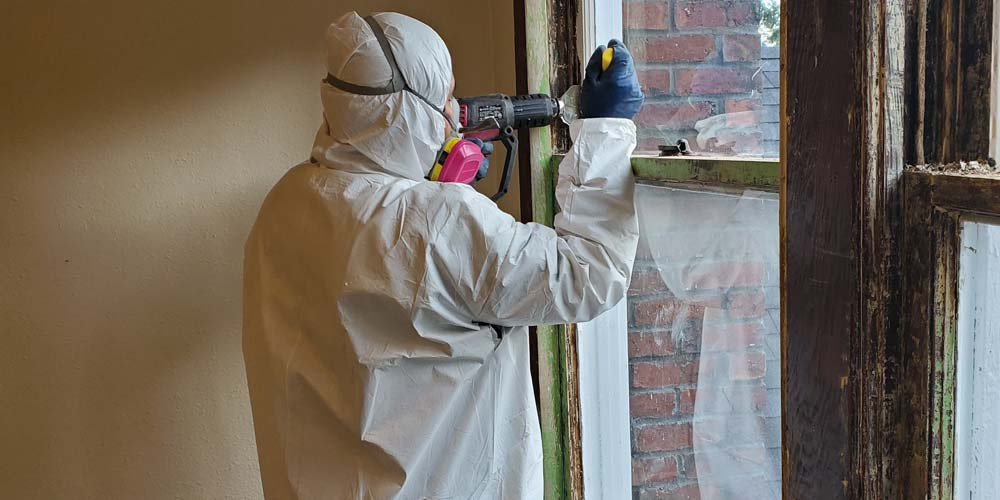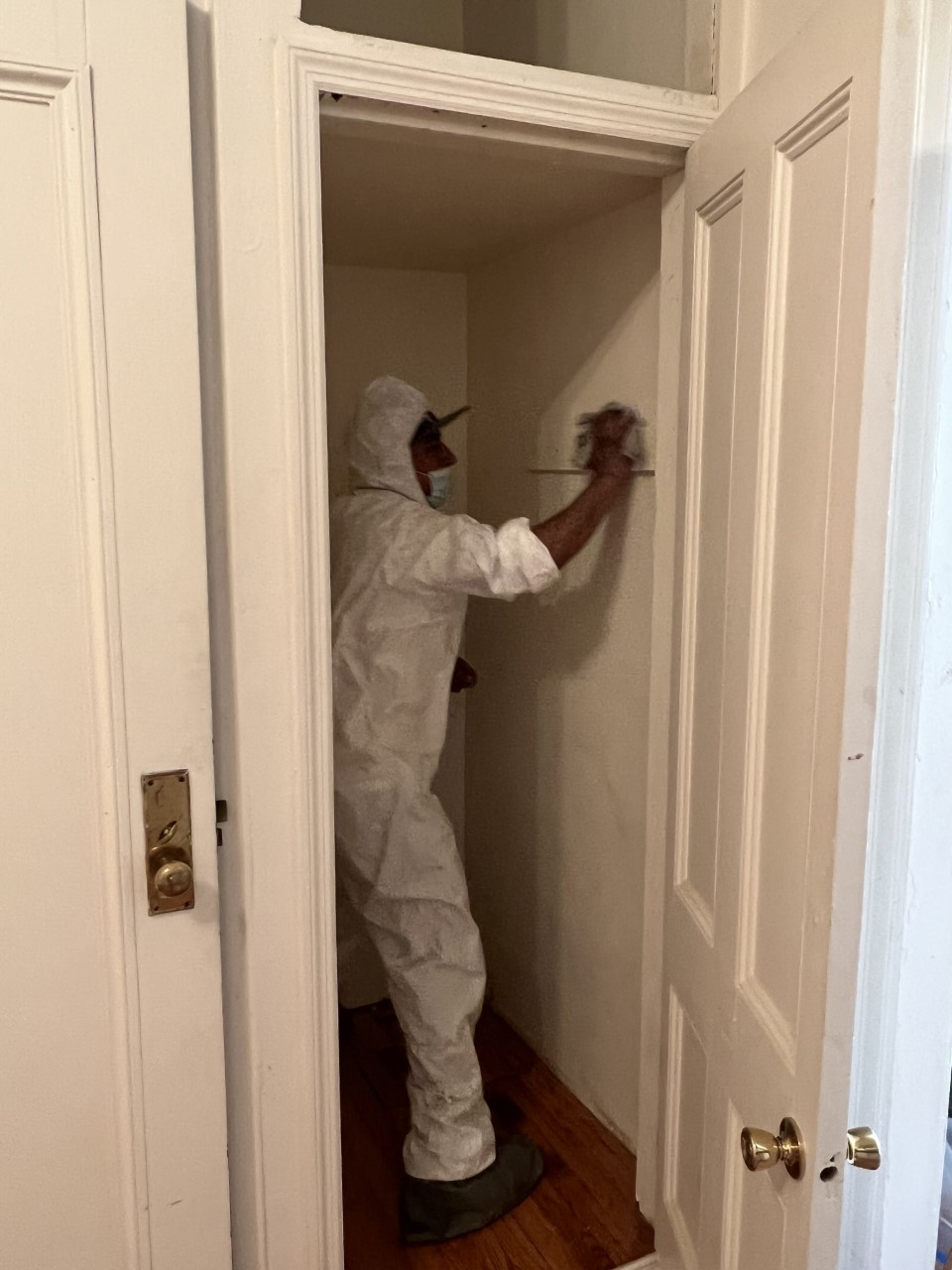NYC Lead Paint Removal Company-- Making Sure Safe and Legal Compliance
NYC Lead Paint Removal Company-- Making Sure Safe and Legal Compliance
Blog Article
Best Practices for Guaranteeing Safe and Extensive Lead Offense Reduction
Resolving lead infraction abatement needs a multi-faceted technique to ensure both security and conformity. First analyses making use of innovative detection methods such as XRF analyzers established the stage for a precise understanding of contamination degrees. Integrating appropriate control techniques, consisting of airtight obstacles and HEPA purification, coupled with the use of personal safety devices (PPE) for employees, develops the foundation of a protected procedure. Meticulous clean-up procedures, including HEPA vacuuming and wet-wiping, are essential. It's the final clearance procedure, entailing extensive examinations and research laboratory screening, that absolutely validates a lead-free environment, making certain long-lasting safety. Just how do these methods adjoin to guarantee extensive lead abatement?

Preliminary Assessment
Conducting a preliminary evaluation is a crucial very first step in lead offense abatement. This stage encompasses a thorough assessment of the home to recognize the existence, extent, and certain areas of lead-based hazards. Qualified experts, such as certified lead assessors or take the chance of assessors, need to execute a comprehensive site evaluation, using tools like X-ray fluorescence (XRF) analyzers to properly discover and determine lead concentrations in paint, dust, soil, and water.
The evaluation has to likewise consist of a testimonial of the structure's history, previous records, and any type of complaints or health problems reported by owners - Lead Removal Contractors. Recording the searchings for meticulously is essential, as these documents develop the basis for developing an effective reduction approach. A complete assessment additionally entails sampling and laboratory evaluation, which are important to validate the existence of lead and guide subsequent activities
Moreover, it is vital to interact the outcomes transparently to all stakeholders, including homeowner, renters, and regulatory authorities. By making sure that the preliminary assessment is carried out with accuracy and rigor, experts can lay a strong foundation for a targeted and effective lead reduction process, inevitably protecting public health and wellness and ensuring conformity with governing standards.
Correct Containment
Correct control is critical to avoid the spread of lead impurities throughout reduction activities. Properly managing control decreases the danger of lead dirt and debris moving to non-work areas, therefore guarding both the setting and individuals outside the immediate job area.

Routine examinations of the containment location are essential to inspect for violations or weaknesses in the obstacle. Any recognized problems should be immediately addressed to keep the stability of the containment. By adhering to these practices, reduction projects can successfully manage lead contamination and reduce affiliated health and wellness threats.
Employee Defense
Ensuring worker security is critical during lead reduction tasks to stop occupational exposure to harmful lead bits. Necessary procedures consist of the use of individual safety devices (PPE) such as respirators, handwear covers, and full-body matches especially designed to obstruct lead dust and fumes. Workers must go through comprehensive training on the right use and upkeep of PPE, including in shape screening for respirators to guarantee maximum efficacy.
Engineering controls, such as local exhaust air flow systems, are critical in decreasing airborne lead concentrations in the workplace. Management controls need to also be executed, including restricting the period of exposure and revolving employees to reduce individual direct exposure times. Normal clinical surveillance and organic tracking are essential for early discovery of lead absorption, allowing prompt intervention and therapy.
Moreover, establishing a decontamination procedure is essential. Employees have to adhere to stringent purification treatments prior to breaks and at the end of their change to avoid lead dirt from being lugged outside the workplace. This includes complete hand and face cleaning with lead-specific cleaner and changing out of contaminated garments.
Meticulous Cleanup
Preserving a safe job atmosphere prolongs past worker protection and incorporates careful clean-up to ensure lead bits are completely eliminated from the website. The procedure of thorough cleanup is essential in preventing the recontamination of the eased off location and protecting both present and future passengers.
To attain a comprehensive cleanup, all workplace need to be systematically decontaminated. This entails the use of specialized HEPA (High-Efficiency Particulate Air) hoover and wet-wiping techniques to capture and remove fine lead dirt that might have cleared up on surfaces. It is imperative to cleanse all horizontal surfaces, go consisting of floorings, window sills, and countertops, along with upright surface areas that may have trapped lead particles.
Workers need to wear appropriate individual safety tools (PPE) during cleanup to prevent direct exposure to recurring lead dust. Used cleaning materials such as wipes, sponges, and mop heads ought to be taken care of according to contaminated materials disposal policies.

Last Clearance
Final clearance is the vital ending stage of lead abatement that determines whether the site is secure for reoccupation. This essential action includes thorough examination and screening to confirm that all lead risks have been efficiently gotten rid of.

Last clearance testing not just protects future residents however also guarantees compliance with neighborhood, state, and government laws. It serves as a documented recognition of the reduction professional's adherence to sector finest methods. Making certain a comprehensive and successful final clearance is crucial in guarding public wellness and fostering rely on the reduction procedure.
Final Thought
Ensuring risk-free and extensive lead infraction reduction requires a complex technique encompassing initial assessments with advanced discovery techniques, reliable control approaches, rigorous employee defense protocols, and precise cleaning procedures. The final clearance phase, featuring detailed inspections and research laboratory testing, is essential to verify compliance with EPA standards. Adherence to home these best techniques ensures a safe atmosphere for owners, reduces health and wellness threats, and upholds regulative needs, thereby promoting public health and wellness and security in lead-affected locations.
Report this page